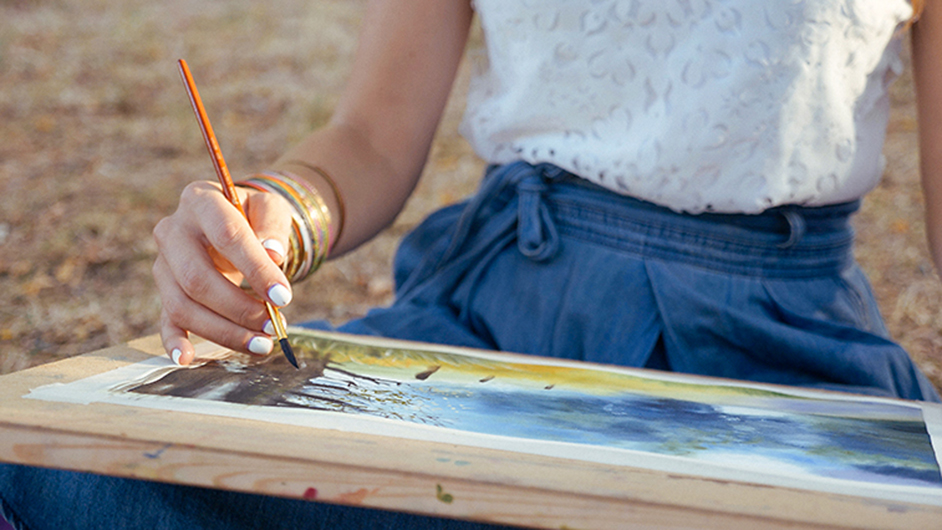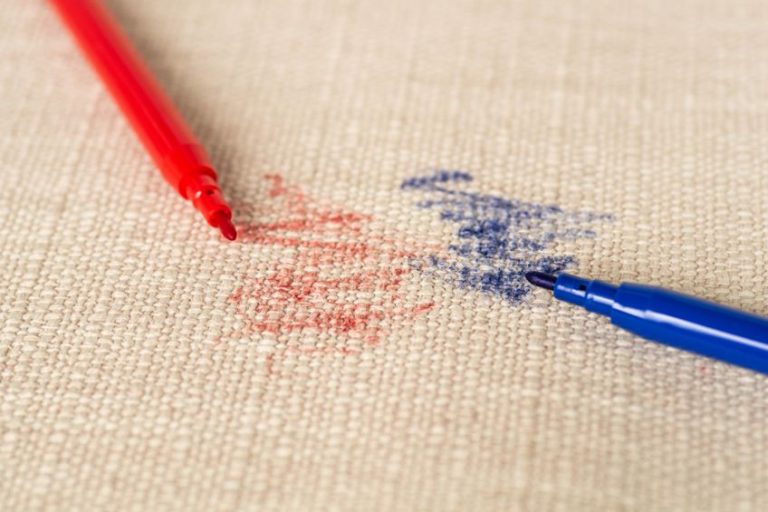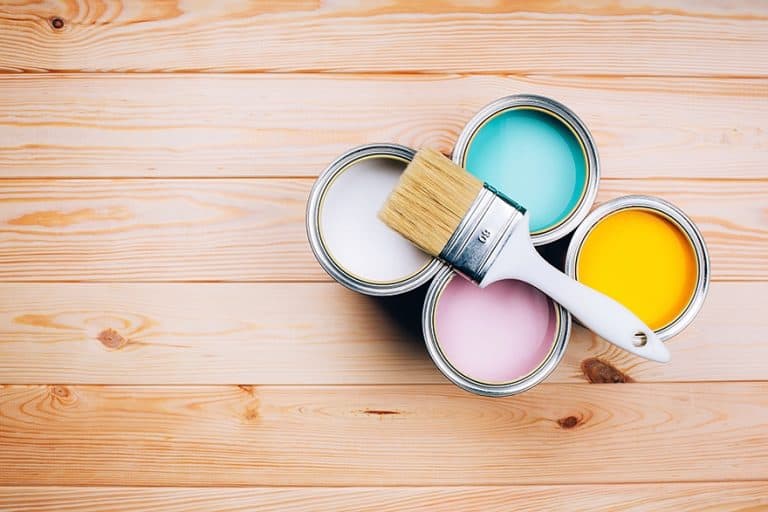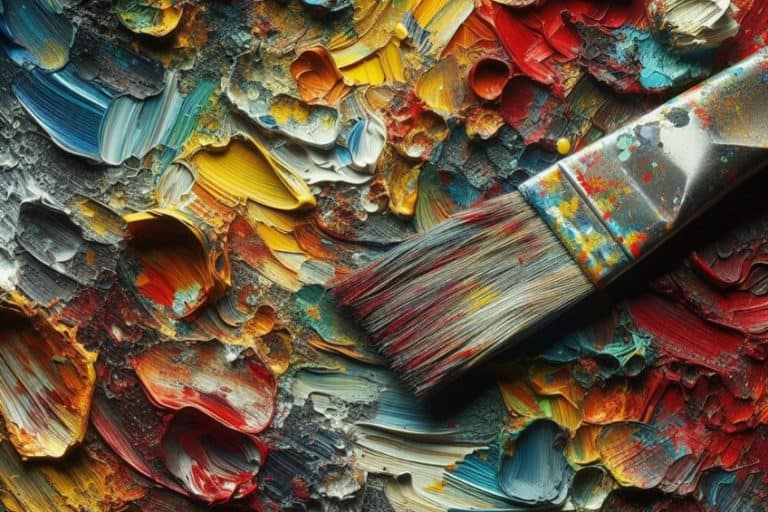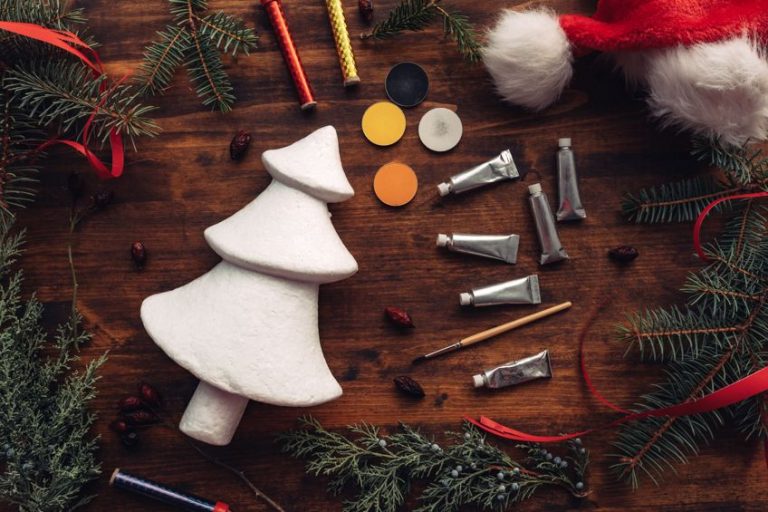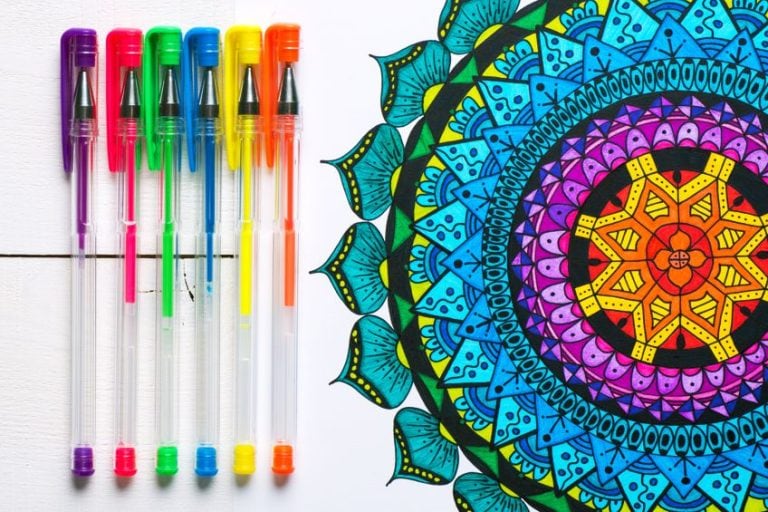What is Watercolor Paper – A Large Overview with Guide
This post may contain affiliate links. We may earn a small commission from purchases made through them, at no additional cost to you.
You will soon discover that when it comes to watercolor painting, there are many things you have to consider when it comes to the paper. The type of watercolor paper texture, weight or paper quality all react to the paint in their own way. What is watercolor paper? Read further to discover the answer. You will learn the different properties of each type of paper in order to make the right choice. What makes a specific paper unique to others? When you know the answer to this question, you will be able to choose more wisely. Of course, trying out various paper types can help you determine which paper is correct for your painting project.
Table of Contents
- 1 Selecting your Watercolor Paper
- 2 What is Watercolor Paper Quality?
- 3 Paper Blocks and Pads
- 4 Watercolor Paper Questions and Answers
- 4.1 Can you use Watercolor Paints on normal Paper?
- 4.2 What makes Watercolor Paper unique?
- 4.3 What is the Difference between cold-pressed and hot-pressed Paper?
- 4.4 Must Watercolor Paper be Acid-free?
- 4.5 Can you Sketch with Watercolor Paper?
- 4.6 Can you use a Printer on Watercolor Paper?
- 4.7 Is there a particular Side of Watercolor Paper you should use?
- 4.8 What is a Deckle Edge?
- 4.9 Is there a Color to Watercolor Paper?
Selecting your Watercolor Paper
Let us have a look at what you should consider when choosing your watercolor paper.
Watercolor Paper Weight
You are looking at the thickness of your paper when it comes to weight. So, the heavier the paperweight, the thicker the paper. You will notice that the paper is measured as follows:
- Grams per square meter(gsm)
- Pounds per ream (lb)
The standard weights for paper are:
- 90 lb (190 gsm)
- 140 lb (300 gsm)
- 260 lb (356 gsm)
- 300 lb (638 gsm)
When painting, the amount of water you use will determine how the paper will react. The thinner paper will distort or bend, while thicker paper can manage the water without warping. You will have to try different weights to see what works best for you. The thinner paper usually requires stretching, meaning you will have to do that yourself to prevent warping. But you don’t have to if you get paper that is 260 lb (356 gsm) or more. Heavier paper can also withstand more work on it.
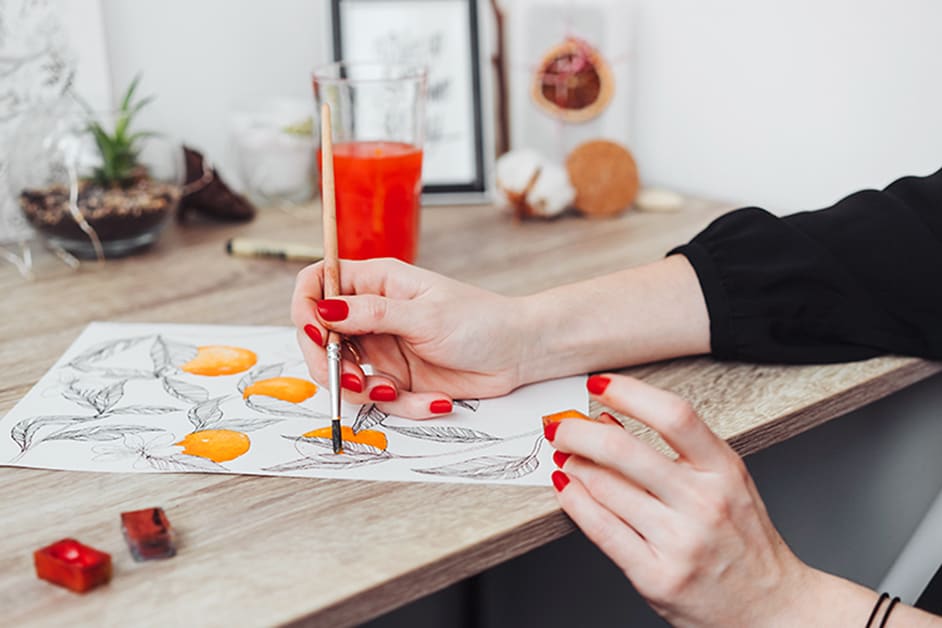
Paper Form
Machine or mold made paper can be bought in packs, pads, blocks, rolls, or you get it in single sheets. The handmade paper can generally be purchased in single sheets. When buying a block of paper, it means that it has already been stretched and is then joined on each side. In this case, you will do your painting and when finished remove the top sheet.
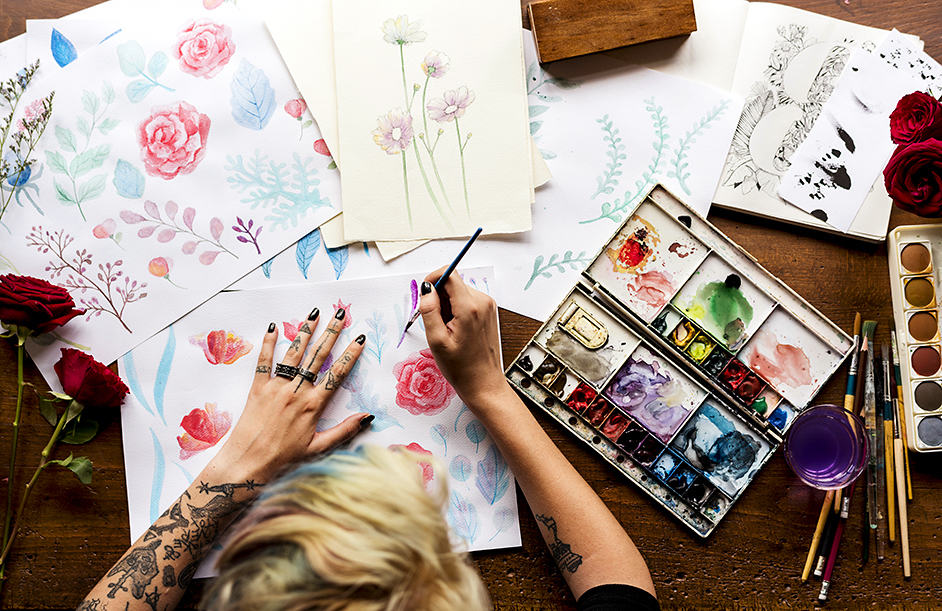
Paper Texture
The texture of your paper is important because the type of paper you need will have to be compatible with what you want to do. What paper you choose is completely up to you.
There are three textures for mold and machine-made paper:
- Cold Pressed (CP) or not hot-pressed (NOT)
- Hot Pressed (HP)
- Rough
Rough Watercolor Paper
Rough watercolor paper displays a textured surface, which when painting makes speckled effects. The paint collects by the raised surfaces, which makes it slightly difficult to control your brush strokes.
When compared to cold-pressed paper, the texture is a lot more evident, but the surface is softer. This type of paper easily absorbs the paint and provides an excellent textured effect.
Hot-pressed Watercolor Paper
This type of paper is finer with a smoother surface, which allows the paint to dry quite fast. The paper feels more like that of drawing paper. This is perfect for larger painting projects and providing a smooth wash with one or even two colors. However, the paper does not work well for more than a single layer of paint. Water is not absorbed as efficiently as cold-pressed paper, so it can pool but this allows you time to experiment and play with the colors until the paint eventually dries.
The paint color can become overworked and since the paper is smooth, it is best used with an ink wash or pen for finer details. You do not have to work your way around any bumps or grooves like you would with the cold-pressed paper. When you make a mistake, hot-pressed paper allows you to fix problems more easily than other types of paper.
Your finished painting project will display brighter colors, as the paint pigments have not been completely absorbed by the paper and sit more on the surface of the paper. The disadvantage of this is that the paint might fade faster.
Cold-pressed Watercolor Paper
This paper has a slightly bumpy texture and sits nicely in-between rough and hot-pressed. This type of paper is considered the best watercolor paper. You can use it for larger pieces as well as for more detailed work.
Paint on cold-pressed paper is absorbed a lot faster than on hot pressed. You can still mess about a bit, but the paint will dry faster, and mistakes are a little more difficult to fix. You do have more control over your watercolor paint, unlike with hot-pressed paper.
The bumps and texture of cold-pressed paper absorb the paint pigment more easily than hot-pressed paper. The colors on cold-pressed paper might not be as bright, as the color is absorbed better. But this provides a more durable art piece. Cold-pressed paper is the better choice if you are wanting a more textured result.
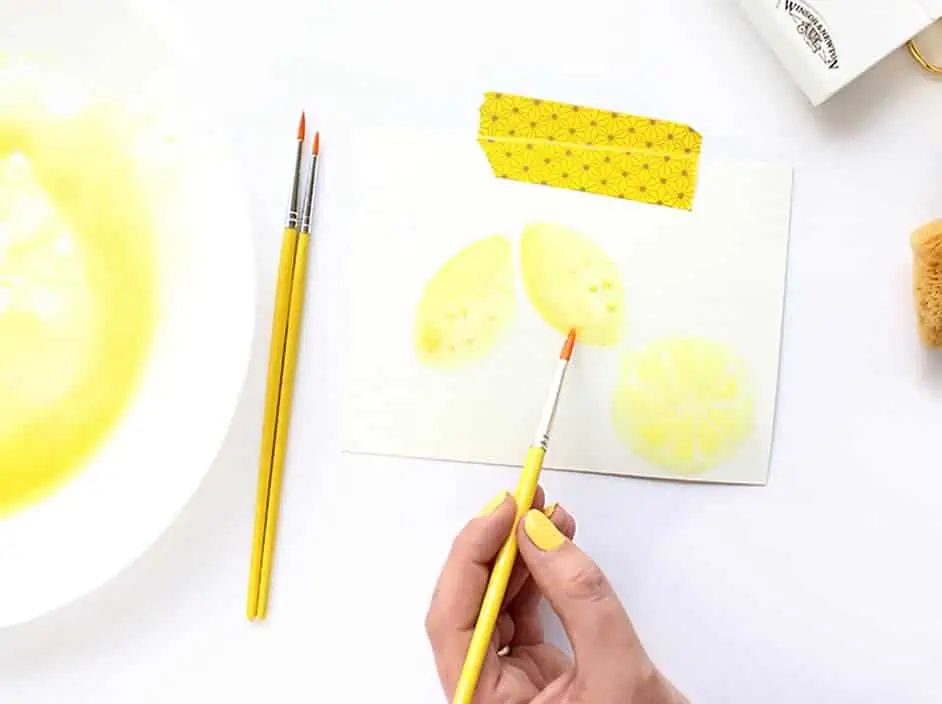
What is Watercolor Paper Quality?
Paper comes in a variety of quality grades from student to professional. The quality will affect how the paint performs and will decide what brush strokes are best used. When the paper is made, it can either be handmade, machine-made, or mold made.
Handmade Paper
Handmade paper is distinctive by the four deckled or natural edges. The paper fiber is randomly spread out, which helps make the paper quite sturdy.
Mold Made Paper
This type of paper has two natural or deckled edges and the fibers are also randomly spread out. Even though it is similar to handmade, it still is not as strong.
Machine-made Paper
This paper is made by a continuous process in a paper machine, which spreads all the fibers out in a similar direction. Some machine-made paper has edges that are made to look natural. However, most of the borders are trimmed.
The process for making machine-made is cheaper, which in turn makes the paper less expensive to buy. However, professional artist watercolor paper is mostly mold-made.
When painting, it is always a good idea to go for the best type of paper, but it does not have to be the most expensive.
Beginners and professional artists should look for paper that is:
- 100% Cotton
- The paper should be acid-free
- pH Neutral
When selecting the best watercolor paper, it should not fade or yellow over the years. In cases of wood pulp paper, you will find the paper deteriorates. For example, Newspaper or the brown crafting paper.
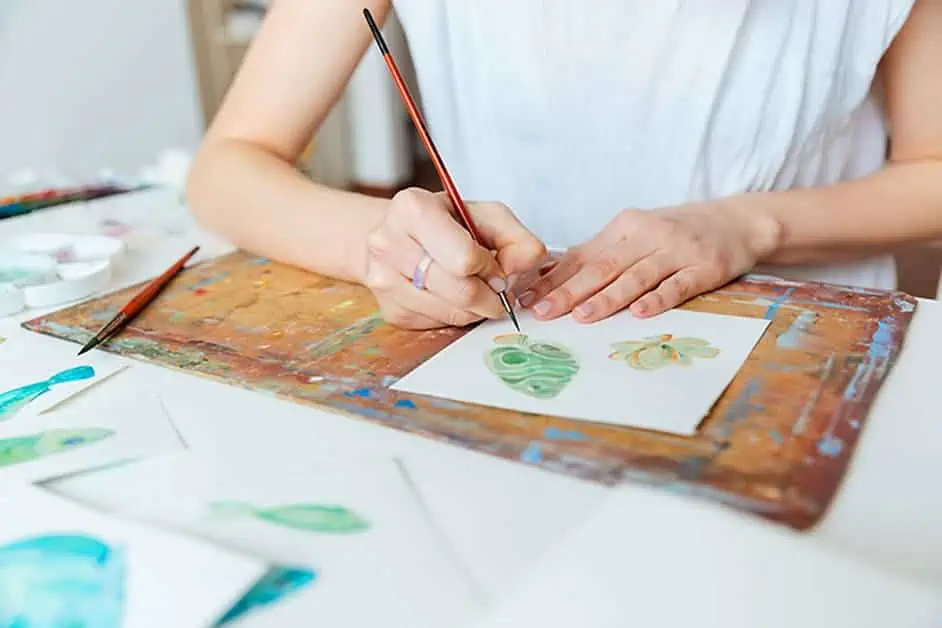
Paper Blocks and Pads
When selecting your watercolor paper, you will find that it comes in either a block or a pad.
Pads of Paper
The pads of paper are simply pieces of paper collected together and bound on one side. You will have to remove a piece of paper, then tape it down when painting. This provides stability and helps to prevent warping. Paper pads are generally cheaper to buy.
Blocks of Paper
The blocks of paper are bonded on all sides or edges. Since this stabilizes the paper quite well, you do not have to stick it down like the pads. You can easily paint and after you have finished, you then remove the paper.
Simply take a palette knife or even an envelope opener, place in the slit underneath your paper and cut all around to remove your paper. Blocks of paper are great for larger projects because of its stability and you will not have to worry about warping.
Paper to Practice on
While practicing your painting techniques, you may want to consider a cheaper type of paper. The cellulose-based pads are a great way to save on your more expensive paper. Unfortunately, the cellulose-based paper does eventually yellow. Since these are only to be used for practice, it should be no problem.
You can choose a cheaper paper, but do not go all the way to the cheapest you can find. You will not learn anything from this, and the cheaper paper might be unpleasant to paint on. Maybe consider using smaller sections of the artist-grade paper to practice on. You can purchase a roll and cut a smaller piece off.
You can also paint on both sides of your paper to practice on. You can also try using better quality watercolor paper, you can then attempt to wash off the paint by immersing the paper in water or placing it under running water. Lay the paper out to dry and use again. But this will not work on the cheaper paper and you cannot do it too many times on artist grade paper.
Professional and Student Grade Paper
These terms are often used to describe the paper quality.
Professional Grade
This is, of course, better quality paper than others and can handle more demanding use. The superior quality is also why it is more expensive.
Student Grade
This type of paper is used for learning and experimentation, which is why it is of poorer quality compared to professional grade. You will, therefore, find it cheaper than other paper.
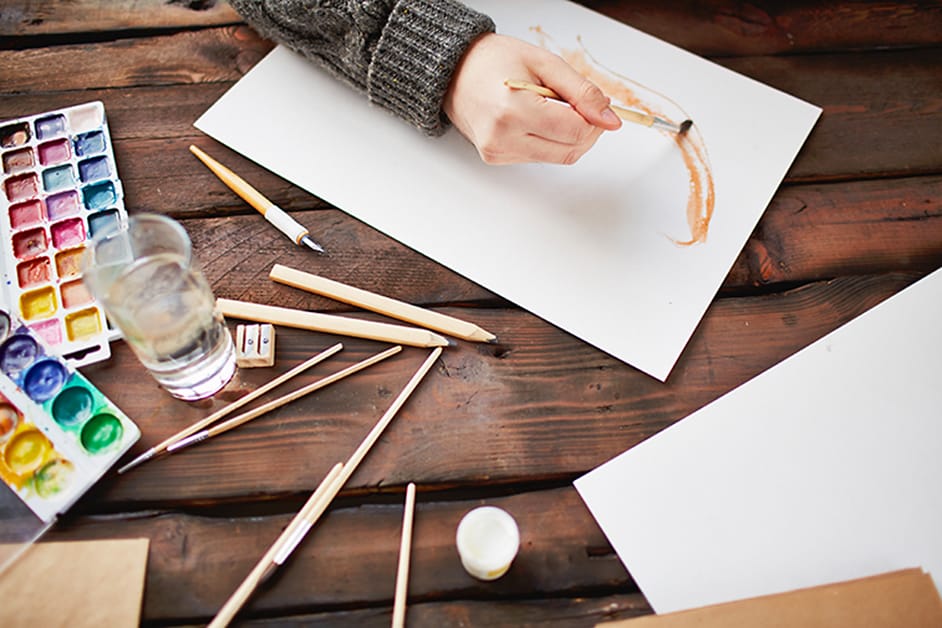
Watercolor Paper Questions and Answers
Can you use Watercolor Paints on normal Paper?
Yes, but it is not recommended. Normal paper tends to be much thinner than watercolor paper, which makes it prone to warping and tearing. Normal paper is just not designed for watercolor use.
What makes Watercolor Paper unique?
Watercolor paper is composed of 100% cotton or a blend of cotton and cellulose. This makes it different from normal paper, which is composed of wood pulp. The cotton is responsible for the absorption of the paint and contributes to the paper’s durability. Watercolor paper is thicker than normal, which helps prevent warping.
What is the Difference between cold-pressed and hot-pressed Paper?
The texture of both types of paper is quite different. The cold-pressed paper has a bumpy texture and is softer, and the paint dries fast on it. Hot pressed paper is smooth and has a fine grain, which does not absorb water as quickly as cold-pressed paper. The paint, therefore, takes longer to dry.
Must Watercolor Paper be Acid-free?
Yes, if there is acid present, it will slowly eat away at the paper. So, it is important when the paper is made, for the manufacturer to remove any acid especially if its wood pulp.
Can you Sketch with Watercolor Paper?
Yes, but depending on the type of paper it could either be easy or a bit more difficult. Hot pressed paper is smooth, so you should be able to draw with ease compared to the rougher cold pressed paper.
Can you use a Printer on Watercolor Paper?
No, watercolor paper tends to be too thick for a normal paper printer. You can, however, try it on another printer that can take the thicker paper.
Is there a particular Side of Watercolor Paper you should use?
Yes, there is a side you should use as there is a difference. One side of watercolor paper is smoother than the other. You might want more texture or a smoother surface, so It depends on what you want to use the paper for. If you want to do more detailed work, a smoother surface is preferable. The other side, which is hairier, is good for layering paints by adding glazes.
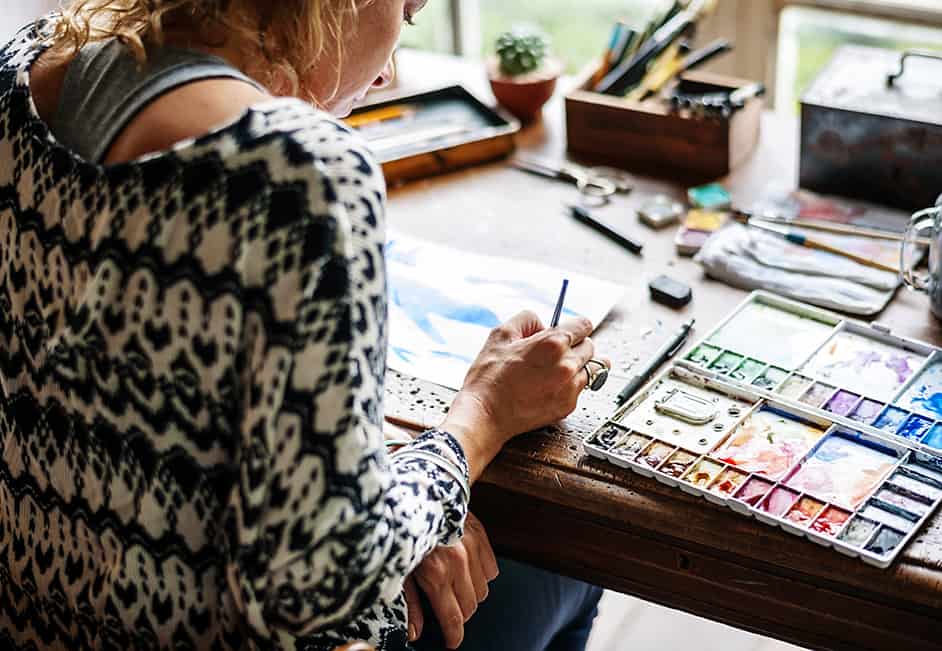
What is a Deckle Edge?
A deckled edge is simply frayed fibers found on the sides or edges of the paper. This is seen mostly in hand-made paper, where the edges form naturally. The hand-made paper has these edges on all four sides, while cut paper will have at least one or more even edges. You also get artificial-looking deckled edges on some machine-made paper. The amount of deckled edge you see, all depends on the manufacturer. Some are narrow, while others are wide to give a more decorative appearance. When it comes to framing your work with a deckled edge, it all depends on what you prefer. Do you want it to show or cut it back, so it won’t show?
Is there a Color to Watercolor Paper?
Yes, it can be anything from a rich cream color to a more bluish-white color. The color depends on the type and also on the manufacturer.
Some colorful names of colors include:
- Bright white
- Absolute white
- Traditional
- Extra White
Each color variation can be evident, or difficult to discern even when comparing sheets of paper placed beside each other.
The color of the paper will affect your work, so it is an important thing to consider when buying. When painting on cream color paper, the effect will have an opaque or muddy effect. While the bluish paper can make your yellow paint seem a bit greenish.
Tip 1: When most of your work is done with graphite, you might want to consider a cream-coloured paper, as a bright white paper might be too intense.
Tip 2: If you are a beginner watercolor artist, do not over concern yourself with the paper color. As long as you understand it does make a difference. Experiment with different types, weights, and colors to see what suits you best.
Matthew Matthysen is a multidisciplinary artist. He completed his fine art degree, majoring in History of Art and Contemporary Drawing Practice at the University of Witwatersrand, South Africa. Before joining acrylgiessen In 2020, Matthew worked part-time as an art teacher at Reddford Blue Hills High school. Matthew creates drawing and painting tutorials for acrylgiessen and captures them not only photographically and in written form. He also records the creation of his works in his own creative studio as in video format, from which later with a voiceover and a video editor also drawing tutorials for the Youtube channel of acrylgiessen are created.
Learn more about Matthew Matthysen and about acrylgiessen.
